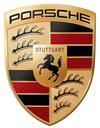
Porsche 911 Turbo (2013-2019) engines, drive and performance
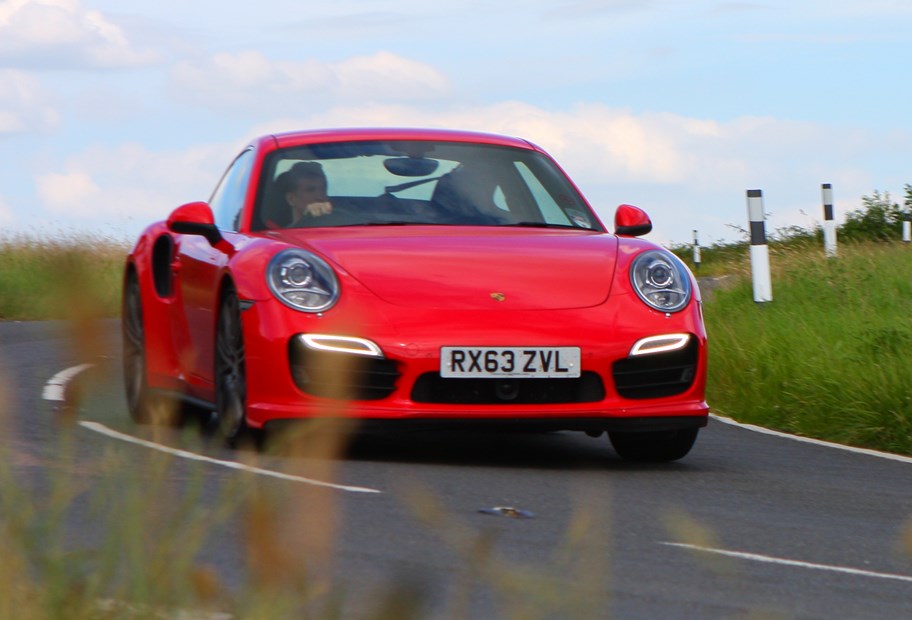
Unsurprisingly, Porsche 911 Turbo performance is crushingly fast. In fact, it wouldn’t be an exaggeration to say it feels too fast for UK roads.
Two variations of the same petrol engine
The twin-turbocharged 3.8-litre flat-six engine feeds its 532bhp (or 571bhp if you go for the Turbo S) to all four wheels via a water-cooled electronically controlled clutch that can send a large portion of the engine’s torque to the front wheels when needed, to help the 911 find traction out of slow corners or off the line.
Accelerating hard in the Turbo is an impressive experience. Porsche claims a 0-62mph time of 3 seconds for the Turbo and 2.9 seconds for the Turbo S, with top speeds of 198 and 205mph respectively.
As well as offering more power, the engine is also more responsive thanks to the Dynamic Boost system, which reduces the time it takes for the turbochargers to reach effective levels of boost, by keeping the them spinning even when you don’t have your foot on the gas. This is particularly noticeable after braking and before entering a corner, when the amount of lag before power is available again is virtually unnoticeable.
The only downside to the 911 Turbo’s forced induction is that it doesn’t sound particularly dramatic; the turbochargers take the edge off the flat-six’s sound inside the cabin (certainly compared with the yowling engine note in the 911 Carrera S). In fact sometimes you don’t realise just how fast you’re going until you glance at the speed readout on the instrument panel, usually with alarming results. It still sounds special though, with some interesting whooshing and gasping noises from the turbochargers at low speeds (though that’s artificially enhanced via the car’s speakers).
The previously optional Sport Chrono Package is now standard and the various drive modes (Normal, Sport, Sport Plus and Individual) are now accessed via a rotary dial on the steering wheel. Both Sport modes alters the engine map and gearbox settings for sharper throttle response and upshifts at higher revs.
Among other factors, this firms up the dampers, shrinks the stability control’s safety net and increases the turbocharger’s boost threshold, allowing peak torque to jump from the claimed standard 660/700Nm (Turbo/Turbo S) to as much as 700/750Nm. The package also includes a dash-mounted stopwatch to log lap times if you take your 911 on track, and a launch control function for optimal getaways.
This drive mode selector dial also houses the new Sport Response Button, which turns everything up to 11 for a period of 20 seconds. This particularly helpful if you’re pottering around and suddenly find yourself in need of everything the 911 Turbo can offer all at once. Press it and the gearbox drops a cog and remaps itself for optimal acceleration, and the engine and turbocharger are primed for maximum power, so when you press the accelerator pedal everything goes backwards very quickly indeed. It might as well be called the hyperspace button. It’s bonkers but utterly fantastic.
When the time comes to slow down, the brakes demand a firm shove on the pedal but they’re very powerful and helpfully progressive. Ceramic discs are an option (and standard on the S), possibly worth considering if you’re likely to use your Turbo on track days but they’re certainly not cheap.
Automatic gearbox only
Unlike the regular 911, there’s no manual gearbox available with the Turbo. Instead, all versions are fitted with Porsche’s seven-speed dual-clutch ‘PDK’ automatic transmission, a seriously impressive bit of kit.
Shifts are super-fast and seamlessly smooth, whether in automatic or manual mode using the paddles behind the steering wheel or the gearshifter itself.
An interesting adaption for 2016 cars saw the direction of the gearshifter reversed, so you pull it backwards for an upshift and forwards for a downshift, exactly the same as the 911 GT3 and GT3 RS. Automatic upshifts have also been supressed so you can hit the limiter for the first time.
Grip, grip and more grip is the recipe here. The Turbo’s balance is biased towards understeer and when it does begin to relinquish its hold on the tarmac it does so at the front axle first. So fast is the car that you would really need a racetrack to understand its upper limits rather than the public road, however.
The 911 Turbo weighs 1,595kg, which isn’t bad for a car with a big engine and four-wheel drive, as well as other sundry systems. There’s an awful lot of tech at work to keep the car on the straight and narrow while you’re enjoying a favourite road.
Firstly, the Turbo’s wheelbase has been increased by 100mm over the regular 911 for greater stability and it also features the party trick of rear-wheel steering.
Fitted as standard, this system uses electrically controlled arms to alter the angle of the rear wheels by as much as 2.8 degrees. Below 31mph, the wheels are turned in the opposite direction to the front wheels to help the 911 dive into corners more quickly as well as having the more prosaic function of improving the turning circle when parking.
At higher speeds (50mph or more) the rear wheels are swivelled parallel to the fronts, which according to Porsche is the equivalent of lengthening the wheelbase by as much as 500mm at a stroke, making the car more stable.
Both the front spoiler and rear wing have three adjustable positions. Pressing a button on the centre console settles the car lower on its springs and sets the rear wing at its maximum height for greater downforce (as well as making the car look a bit more imposing). On UK roads you’re generally best leaving the dampers in ‘normal’ mode for the majority of the time to better cope with bumps and potholes.
Though it is impressive and exciting to drive, the heavier, all-wheel-drive Turbo does feel a little bit blunter and less precise than the less powerful (but still very quick), two-wheel-drive 911 Carrera.


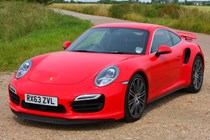

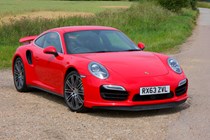
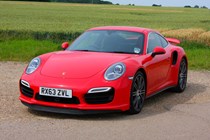
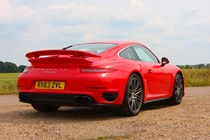
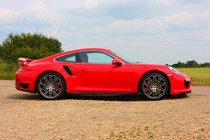
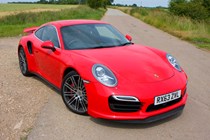

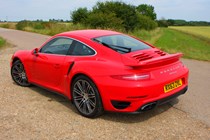
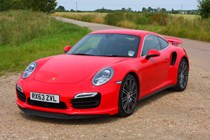

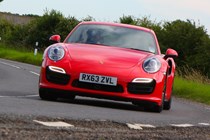
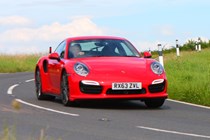
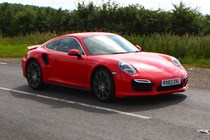
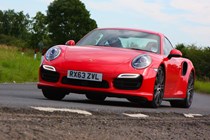

.jpg)
.jpg)
.jpg)
.jpg)
.jpg)
.jpg)
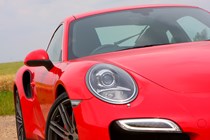
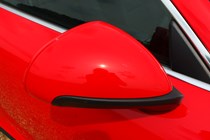
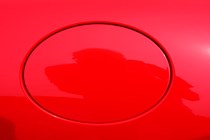
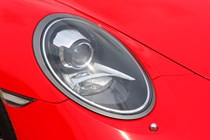
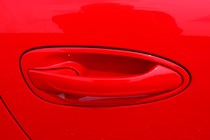
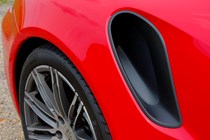
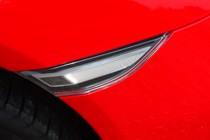
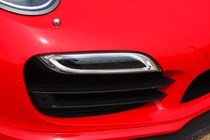
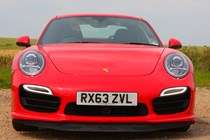
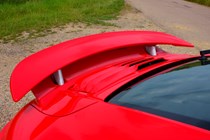
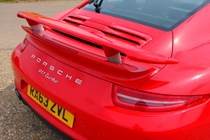
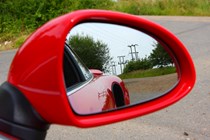
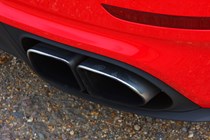
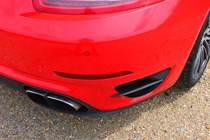
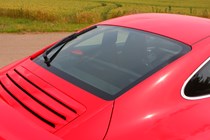
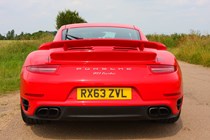
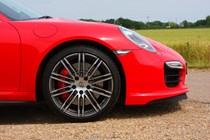
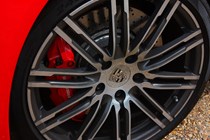
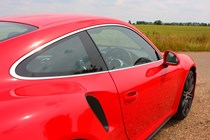
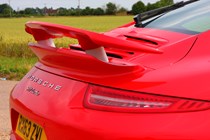
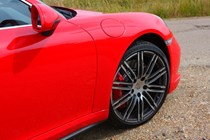
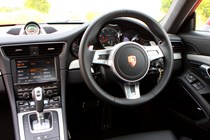
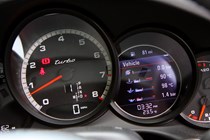
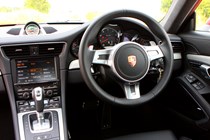
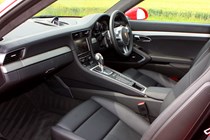
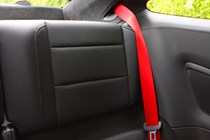
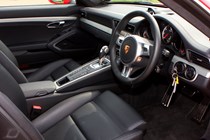
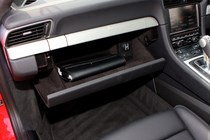
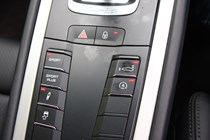
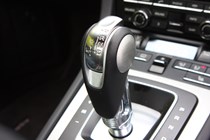
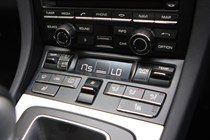
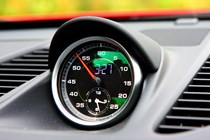
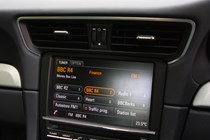
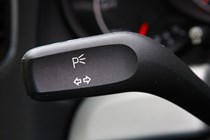
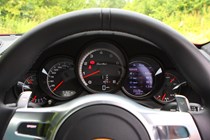
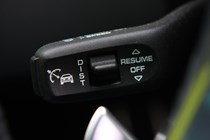
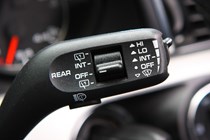
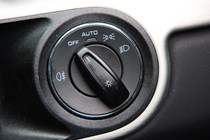
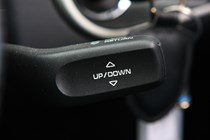

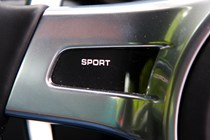
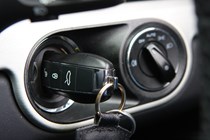
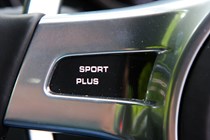
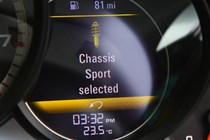
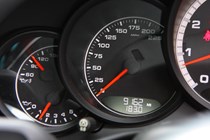
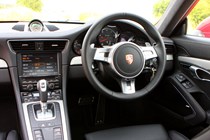
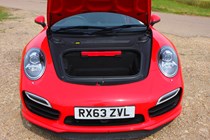
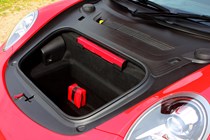
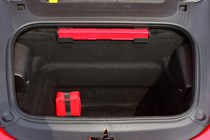
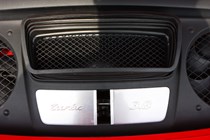
















.jpg?quality=50)
.jpg?quality=50)
.jpg?quality=50)
.jpg?quality=50)
.jpg?quality=50)
.jpg?quality=50)

















































